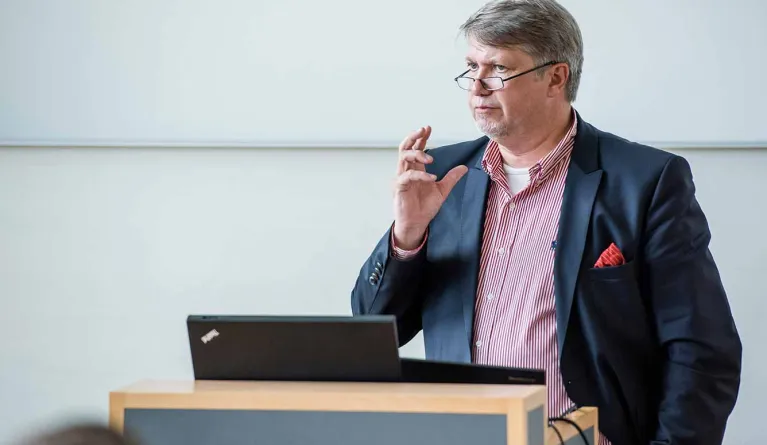What is demography?
The convergence of digitalisation, decarbonisation and demographics is reshaping the landscape of infrastructure development. Demographic factors, including population growth, urbanisation, and changing age structures, significantly impact the demand for infrastructure services. Today we delve into the complex relationship between these three pillars and gain an understanding of how demographics can help develop strategies for sustainable, resilient, and technologically advanced infrastructure.
Demography in the context of infrastructure
One of the three mega-trends shaping the future of infrastructure involves our rapidly ageing population. According to a 2006 study from the Federal Statistical Office, Germany’s number of working-age people will drop by 22%-29% by 2050. More recent research shows that Germany’s working-age population will decline to around 54m by 2030, compared with almost 56m in 2022. This is equivalent to a decline of around 221,000 a year on average. These predictions will have consequences for a whole range of sectors, healthcare in particular. It also means that infrastructure has to be more flexible, which can be challenging.
Demography as the silent architect
Demography, the statistical study of populations, is often the silent architect behind the design and development of infrastructure. Understanding the dynamics of demographics is emerging as a crucial factor in creating sustainable and resilient infrastructures that not only align with decarbonisation goals but also leverage the power of digitalisation to meet the diverse needs of today’s society.
Urbanisation dynamics
Urbanisation is a global phenomenon, with more people gravitating towards cities in search of opportunities. Demographic insights into these urbanisation trends are crucial for designing city infrastructures that can accommodate growing populations without compromising sustainability. Smart city solutions, integrating digital technologies, can optimise resource use and improve the overall quality of urban living.
Ageing population and healthcare infrastructure
The demographic shift towards an ageing population poses unique challenges to healthcare infrastructure. Digitalisation has become a key ally in addressing healthcare needs, offering solutions like telemedicine and remote monitoring. By embracing technology, we can build healthcare infrastructures that cater to the specific requirements of older demographics while contributing to overall decarbonisation efforts.
Workforce changes and digital connectivity
The rise of remote work and digital connectivity is reshaping the traditional infrastructure needs of the workforce. Robust digital infrastructure is essential for supporting a connected workforce and facilitating economic development. By adapting to these changes, we not only boost efficiency but also reduce the carbon footprint associated with commuting and office-based work.
Integrating demography with decarbonisation and digitalisation
Demography, when strategically integrated into the realms of decarbonisation and digitalisation, emerges as a driving force for shaping the future of infrastructure. By acknowledging and adapting to demographic shifts, we can build infrastructures that are not only environmentally sustainable but also technologically advanced and inclusive.
Data-driven decision making
Utilising demographic data in conjunction with digital tools enables data-driven decision-making for infrastructure planning. This approach ensures that development strategies align with the unique needs of different demographic groups, fostering inclusivity.
Innovation in transportation
Demographic shifts influence transportation preferences. Investing in sustainable and digitally enhanced transportation solutions, such as electric and autonomous vehicles, not only aligns with decarbonisation goals but also improves mobility for diverse populations.
Smart cities for inclusive living
Digitalisation empowers the creation of smart cities that cater to the needs of diverse demographics. Incorporating Internet of Things (IoT) technologies and data analytics can enhance urban living conditions while minimising environmental impact.
Collaborative governance and stakeholder engagement
A collaborative, multi-stakeholder approach involving governments, businesses, and communities is imperative for successful infrastructure projects. Engaging with various stakeholders ensures that infrastructure development considers demographic nuances and aligns with wider sustainability and digital innovation goals.
Study the 3 Ds at PFH
Over the past 30 years, the requirements of students and employers regarding course offerings have changed tremendously. Future designers are faced with the challenge of finding effective and innovative solutions in business, society and politics for the three defining trends of our time:
- Digitalisation
- Decarbonisation
- Demography
Teaching
Students at PFH receive a thorough introduction to the 3 Ds at the start of their studies. Our professors also offer topics for bachelor’s and master’s theses as well as lectures, workshops and excursions related to the 3 Ds. Moreover, the best theses with a direct connection to the 3 Ds are awarded by the departments every year.
Research
Many research projects at PFH are closely related to the 3 Ds and are funded by the university. We regularly publish our professors’ research papers, thereby providing impetus for practice.
Further training
We are currently in the process of creating a certificate course on the topic of the 3 Ds that will be available through our PFH Academy. This innovative training programme will prepare managers from business, administration and politics for the key challenges of the future.
Thanks for taking the time to read our blog post on what is demography. Should you choose to start your studies here, take a look at the different study programmes we offer.
At PFH we make sure you receive a high-quality education while fully experiencing being a distance learning student!
